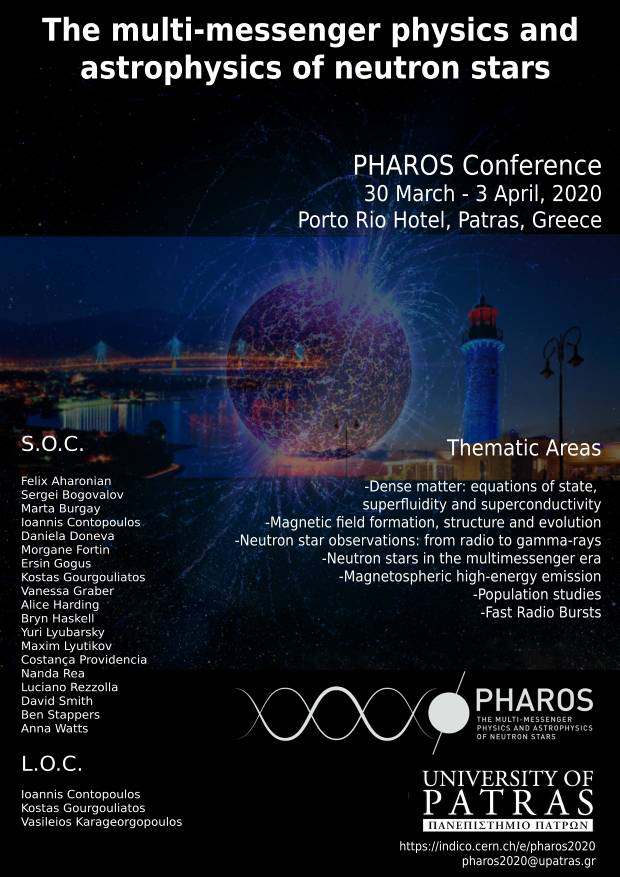Speaker
Description
Neutron star in the center of young (330 yr) supernova remnant Cassiopeia A is thought to demonstrate enhanced cooling inconsistent with the standard neutron star cooling via the modified Urca processes. One of the possible explanations of this phenomenon is a recent (approx. 80 yr ago) transition of the neutron liquid in the neutron star interior to the superfluid state [1]. Recently [2] the new Chandra data of this object were presented, extending the cooling observations range to 18 years (2000-2018). These data demonstrate continuing cooling of the star with temperature decline rate about 2.7 per cent at 10 yr base, although the considerable skepticism exists [3].
In the talk we present new model-independent (applicable for a broad range of the equations of state) analysis of the neutrino emissivity due to triplet Cooper paring of neutrons. The developed technique is applied to the Cas A cooling data. We find that the (redshifted) maximal critical temperature of the superfluid transition is constrained in a range ($T_{Cn\;\mathrm{max}}^{\infty}=(5^{+1.5}_{-0.5}\times 10^8$ K). This restriction weakly depends on the equation of state or the specific density profile of the critical temperature, however it depends on the overall strength of the Cooper paring neutrino emission. The obtained constraints also hold if the actual cooling of the Cas A NS is slower, as suggested in [3]. We also set the robust minimal limit on the Cooper pairing cooling rate consistent with observations.
The work is supported by Russian Science Foundation, grant # 19-12-00133.
[1] Shternin et al. 2011, MNRAS, 412, L108; Page et al. 2011, PRL, 106, 08101;
[2] Wijngaarden et al. 2019, MNRAS, 484, 974;
[3] Posselt, Pavlov 2018, ApJ, 864, 135.

